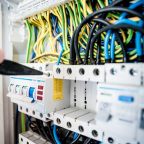
Expert Reveals Six Ways to Prepare Floors for Potential Flood Damage
With Storm Bert leaving flood warnings in place across the country, it’s important to take action to protect your home — especially your floors.
Flooding can cause devastating damage, but with the right preparations, you can minimise the impact.
Here, Liam Cleverdon, Flooring Expert at Flooring King, shares six important steps to help homeowners protect their floors against flood damage.
Liam Cleverdon, Flooring Expert at Flooring King said: Damage to your floors can be costly and stressful, but with the right steps, you can protect your home before disaster strikes. It’s all about being proactive—inspecting your flooring for vulnerabilities, sealing any gaps, and applying protective finishes. These simple measures can make a huge difference when heavy rain or flooding threatens your home."
1 Seal any gaps to prevent seepage
"To protect your existing flooring, start by inspecting for any gaps or cracks. Use a high-quality sealant to fill these areas, especially around skirting boards and in the corners of rooms. This proactive measure can significantly minimise the risk of water seepage during flooding, safeguarding your floors from costly damage."
2 Apply waterproof finish or sealant to hardwood floors
"If you have hardwood floors, consider applying a waterproof finish or sealant. This protective layer can help repel moisture and prevent the wood from swelling or warping during a flood. Regularly reapplying the sealant ensures that your flooring remains resilient against water exposure."
3 Invest in water-resistant underlay
“For those with carpeted floors, invest in a water-resistant underlay if you haven't already. This underlay can serve as a protective barrier against moisture, providing a critical layer of defence that helps prevent water from reaching the carpet and subfloor."
4 Stay on top of floor maintenance
"Regular maintenance is crucial in protecting floors from damage, especially water or flood damage. Make time for inspections of your existing flooring to identify any signs of wear, especially in areas prone to flooding. Promptly address any issues, such as loose boards or damaged tiles, to ensure your flooring is in the best possible condition before adverse weather hits."
5 Create flood barriers at entry points
"Introduce flood barriers at entry points, such as doorways, to prevent water from entering your home. These barriers can effectively redirect water away from your flooring and are an important measure for protecting your interiors during heavy rainfall."
6 Use rubber mats in areas prone to water entry
"If flooding is a concern, consider placing rubber mats in areas prone to water entry. These mats can absorb moisture and prevent water from pooling on your floors, providing an additional layer of protection for your existing flooring."













